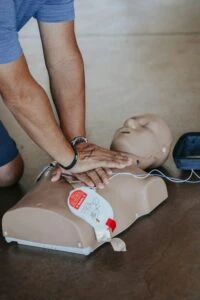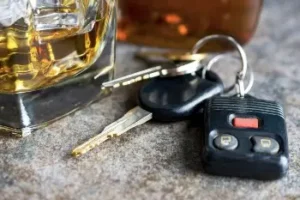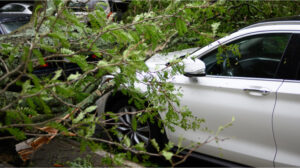
When you are in a public place and someone collapses because they are having a heart attack, look by a wall or an elevator for a compact red, yellow, or green box imprinted with hearts and the letters AED on it. It could help you save a life.
The automated external defibrillator (AED) is an electronic device that sends electric shocks into the chest of someone having a heart attack to restore their heartbeat after their heart rhythm becomes irregular, known as ventricular fibrillation (VF). Fears of being sued for using an AED in an emergency are common, but they are based on myths.
Sudden cardiac arrest is the number one cause of death in the U.S. When you encounter someone suffering from SCA in a public space, they have only minutes to live without defibrillation, which may not be enough time for paramedics to arrive. Using an AED, coupled with CPR, gives the person in cardiac arrest the chance to recover, according to the American Heart Association (AHA).
Conquer Your Fear of Using an AED
In an emergency, people may be reluctant to help because they do not know CPR or understand how to use an AED. They might worry they will make matters worse that by trying, but they won’t. The heart attack victim is much more likely to die when no one tries to help.
The machine will guide users, as will the person answering a 911 call. Dr. Mary Ann Peberdy, a Virginia Commonwealth University professor of medicine and emergency medicine, confirms that using AED electric shock and CPR give a heart attack patient the best chance for survival.
When someone is having a heart attack, begin by checking for a heartbeat or pulse, then call 911 and begin CPR. The 911 operator is trained to instruct callers on how to perform CPR when unfamiliar with it. Dr. Peberdy stresses that the person performing CPR should not stop to look for an AED and should instead ask a second bystander to do so. The person at the information desk in a public building will know where the AED unit is if it is not readily apparent.
Injured on Someone Else’s Property?
Know Your RightsOur expert premises liability lawyers will help you hold negligent property owners accountable.
Get a Free Case Evaluation
504-500-1111AED Instructions
Once the box is opened, the user will find pads and a diagram showing where to place the pads on the skin. The device will give verbal instructions (in English, though AEDs with instructions in Spanish are available in some areas) after it is turned on. The AED analyzes the person’s heart rhythm to determine if an electric shock is appropriate, which is the only time CPR should be paused. The AED will deliver a shock if its analysis calls for it, and then it will instruct the helper to resume CPR. Doctors say even children can follow the directions and apply electric shock without making the situation worse.
Call an Attorney for Help With an AED Lawsuit
You may worry you will get into trouble if you accidentally injure someone while doing CPR and using an AED, but cardiac arrest is technically death, and you are attempting to save a life. Sometimes, distraught families who lose their loved one may decide to try and sue you. There are Good Samaritan laws in place to protect you, although there are some qualifications you must meet.
When someone tries to sue you for injuring them while attempting to save their life, and you qualify as a Good Samaritan, contact a lawyer at Scott Vicknair who is ready to defend your position.



